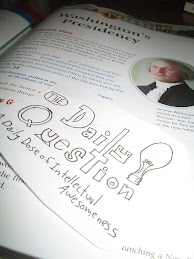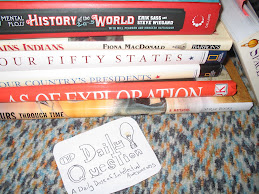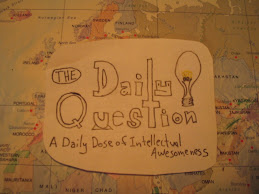What it Takes to be Great
Throughout the course of American history, a select few behemoths of men and women have forever changed the face of culture, society, and even the American way of life itself. They have included politicians, artists, war heroes, writers and athletes. Most have come from different lifestyles, different states, and different niches. So what brings these exclusive few into the pantheon of American greatness? In my opinion, their ability to affect the public came from their ability to effectively communicate with the public. There is no better example than that of George Washington and Ulysses S. Grant. Both were shockingly different, yet both had successful careers as high ranking generals and then two-term presidents. At first glance, it seems improbable that they had anything in common, but if you look just beneath the surface, you can see their two genius techniques of reaching out to the common man, through public image and social behavior.
Ulysses S. Grant was born on April 27, 1822 in Ohio. He was born into a middle class family. His father, Jesse, owned a modestly successful tannery that brought a fair amount of money into the family. Jesse Grant was very ambitious and opinionated. He acquired these personality traits when working for a judge’s family. They helped educate him and get his tannery started (Bunting 9). On the other side of the spectrum, his mother Hannah was often described as a quiet or taciturn woman, a term often used to depict Grant (Bunting 9, Bunting 2). Ulysses had 5 siblings, and for most of his life, he remained one of his father’s favorites. For this reason, his father often pushed him towards greatness and nothing less. One example of this was his father’s insistence that he go to boarding school in preparation for attendance at West Point and a career in the military. Although he ultimately followed this path, the military life was originally not appealing to Grant.
Now this is the first difference we can see between the two. George Washington was born on February 22, 1732. However, he wasn’t being pushed for greatness the way Grant was by his father. Being born into an aristocratic Southern family, he might not have been able to do much more than be a gentleman farmer (Howard). The closest thing that came to academic excellence for Washington was being sent to boarding school a couple of times. By the time he was 16 he had established some connections and was trying to accumulate land.
One thing that can be said of Grant at this point is that he was a “doer”, and remained so for his entire life. During the Civil War, Grant usually did what needed to be done, quickly and efficiently. A job started was always finished. “One of my superstitions has always been when I started to go anywhere, or to do anything, not to have to turn back until the thing intended was accomplished.” (Bunting 11) This attitude helped him get through West Point, and by the time he was through, actually enjoy it.
Here is yet another difference between the two. Though Washington was certainly ambitious, he was not known as a fast reactor. During the Revolutionary War and his presidency, he would often hold war councils or cabinet meetings. The meetings took time, however, with a cabinet of Henry Knox, Alexander Hamilton, John Adams and Thomas Jefferson, the outcome was often good decision making. (The Presidents episode 1)
One thing Grant and Washington did have in common was their love of horses. Both were called some of the best horsemen of their day (The Presidents episode 1, Bunting 18.)
One attribute that made Grant good for riding was his size. Even when he was entering into West Point at the age of 17 he weighed 117lbs and stood 5’1”. Washington rode more for show, which is probably good since his height was over 6 feet (Presidents episode 1).
Only one year after Grant’s graduation from West Point, The Mexican War was beginning. Grant experienced much action throughout the war. This war gave him a chance to hone some of his fighting skills which later made him an effective general. The Mexican War provided him an opportunity to be under fire. In his first glance at combat, he was ordered by Zachary Taylor to attack Mexico’s right flank as an infantryman. Another glance at combat for Grant was his volunteer mission through Monterrey. In this instance, he rode through the streets leaning on the side of his horse, so no one had a shot at him, a tricky equestrian feat at the least (Bunting 24). He was also known to take care of his wounded men. Many of his peers remember Grant tending for the wounded after battle (Bunting 24). Showing his aggressiveness on the battlefield and sympathy towards his men are both traits of a good general and one that would help Grant later.
Here, we can see how Grant’s and Washington’s army experience differ from each other. Even though Washington and Grant participated in smaller wars before the ones they are known for, Washington was rapidly thrown into battle in his early years. His first major command in the French and Indian War was the defense of Fort Necessity. Fort Necessity was built after a brief run in with the French, who were a much larger force. The fort was not very well defended, and Washington later had to surrender to the French. Further into the war, when Washington was under the command of British General Edward Braddock, Braddock was conducting a march to Fort Duquesne. The British were ambushed. American Indians were swarming from the sides of the road, attacking the widely uncovered red-coats in a thin line along the road. Braddock was eventually killed, and Washington had two horses shot from under him and four holes put through his jacket (Adler 53). This was not a good way to begin a military career, especially compared to Grant’s string of successes.
The war with Mexico was only the beginning of Grant’s military career. If not for the bloodiest conflict in American history, the Civil War, his career would have probably spun into some dark corner of history. Grant’s go-get’em attitude helped him in his first war, and would undoubtedly help him win the next. Early in the war, the union suffered at the hands of many inept generals. However, at this same time, Ulysses S. Grant was along out in the West, rising through the ranks, and helping to capture imperative locations along the Mississippi River (Dallek, et al 552)
Fortunately for the Union, Grant’s work in the West didn’t go unnoticed. As early as February, 1862, he was commanding large units of men. He continued to keep pushing, and effectively controlled large chunks of Confederate land near the Mississippi River. (Dallek, et al 552)
In March, 1864, Grant was given command of all Union Armies. This was a great honor only bestowed on a few since. He continued to be aggressive, this time through Northern Virginia. He wanted Lee, and wanted him bad. With a seemingly blatant disregard for casualties, Grant pushed his men forward after Lee. Just in one battle, the battle of The Wilderness, he lost 17,000 men. At Cold Harbor, 7,000 men lost. But Grant failed to cease, “Whatever happens, we will not retreat” (Dallek, et al 552). This method worked, and Grant finally caught Lee, forcing him to surrender on April 9th, 1865, effectively ending the war.
Washington’s experience was quite the opposite. He was on the defending side of the conflict. The British had legions of men to send against America, while he only had a few militia men. Washington’s plans had to be focused more on strategy, though sometimes they were executed with aggression. The famous example of crossing the Delaware to capture a fort in Trenton on Christmas Eve is just one example of aggression with careful planning. Not that I’m insinuating Grant didn’t have good strategy also, it’s just that Washington didn’t have the men to spend.
Washington got to make these strategic decisions through a series of lucky breaks. Even though he was part of some unsuccessful missions in the French and Indian war, he was brought up to rank of Colonel by the end of the conflict. During the beginning of the Revolution, 1775, he was made military advisor for New York. After that, in a short period of time, he was made Commander-in-Chief of the Continental Army (Howard). After years of Guerrilla tactics, and some well planned Napoleonic techniques, America had the opposing general, Cornwallis, cornered. He eventually surrendered at the end of the Battle of Yorktown.
And for these two men, their stories could easily have ended there. They both had money, celebrity, power, and yet, there destiny had not been completely found. Both still had more years of dedicated service to their country. After their victories, they were almost guaranteed to be nominees for president, if not easily being elected. In fact, George Washington didn’t even have a campaign, and was elected unanimously
(Presidents episode 1). Grant won by a pretty good margin both times he ran also. Thankfully, for the sake of historical comparison, they had similar problems to deal with while in office, the main problems being domestic.
A misconception of Grant’s presidency was that he really didn’t do much, and the entire time he was fighting scandals. After the war, things weren’t all well and good in the South. At the time, the Ku Klux Klan was wreaking havoc on African-Americans in the Deep South. To combat the killing, Grant launched a war on terrorism, and went after the KKK. In the end, Grant is able to temporarily destroy the KKK with help from many federal troops.
Where he ran into problems was in his second term. Even after his cabinet, mostly made up of people Grant owed a favor or friends of his family, continued to discredit the executive branch with scandals, he continued to trust them. Then, Southern states were taken by the Democrats. This created a lot of political tension, so when violence started up again in the South, Grant was unable to do anything (Presidents episode 4).
Thankfully, Washington’s domestic problem wasn’t as severe as Grant’s, but he acted in a very similar way. To help pay for the Revolutionary War, new taxes were being put in place on liquor. Farmers in Western Pennsylvania didn’t like that, since they made a lot of whiskey. In response, the farmers were trying to start a rebellion. As soon as he got the news, Washington mustered up some troops and quickly stomped out the riot, without a single shot being fired (Presidents episode 1).
So if they both had similar problems that were both dealt with effectively, why then is Washington thought of as one of the better presidents, and Grant is usually forgotten (Presidents episode 4). The answer can be found in the second term of their presidential stays. After Grant’s men continued to betray him, he naively took no action. Washington on the other hand, since he placed some of the smartest cabinet members together, didn’t have as many internal problems. In fact, he was able to build a capital and make a federal banking system. Once again, there are two techniques that made these men completely different.
So what made them successful? I don’t think you could achieve a higher level of success in America than being a top commanding general then president for two terms. So what did they have in common? As I said before, how they were able to become great was through their ability to connect. This is one of the only common traits between the two, even down to their appearance. Grant was often described as “seedy”, yet in pictures of Washington, you can always see him standing tall and regal (Presidents episode 1) (Leadership). Yet through all these differences, they could motivate people. One way they did this was to be with the soldiers they were leading. Washington was freezing at Valley Forge along with his men. Grant was sometimes described as a “dust covered man on a dust covered horse”, meaning that he was often riding right along side of his Union troops (Civil War). What both these generals did was offer inspiration to their men.
Throughout the course of American history, a select few behemoths of men and women have forever changed the face of culture, society, and even the American way of life itself. They have included politicians, artists, war heroes, writers and athletes. Most have come from different lifestyles, different states, and different niches. So what brings these exclusive few into the pantheon of American greatness? In my opinion, their ability to affect the public came from their ability to effectively communicate with the public. There is no better example than that of George Washington and Ulysses S. Grant. Both were shockingly different, yet both had successful careers as high ranking generals and then two-term presidents. At first glance, it seems improbable that they had anything in common, but if you look just beneath the surface, you can see their two genius techniques of reaching out to the common man, through public image and social behavior.
Ulysses S. Grant was born on April 27, 1822 in Ohio. He was born into a middle class family. His father, Jesse, owned a modestly successful tannery that brought a fair amount of money into the family. Jesse Grant was very ambitious and opinionated. He acquired these personality traits when working for a judge’s family. They helped educate him and get his tannery started (Bunting 9). On the other side of the spectrum, his mother Hannah was often described as a quiet or taciturn woman, a term often used to depict Grant (Bunting 9, Bunting 2). Ulysses had 5 siblings, and for most of his life, he remained one of his father’s favorites. For this reason, his father often pushed him towards greatness and nothing less. One example of this was his father’s insistence that he go to boarding school in preparation for attendance at West Point and a career in the military. Although he ultimately followed this path, the military life was originally not appealing to Grant.
Now this is the first difference we can see between the two. George Washington was born on February 22, 1732. However, he wasn’t being pushed for greatness the way Grant was by his father. Being born into an aristocratic Southern family, he might not have been able to do much more than be a gentleman farmer (Howard). The closest thing that came to academic excellence for Washington was being sent to boarding school a couple of times. By the time he was 16 he had established some connections and was trying to accumulate land.
One thing that can be said of Grant at this point is that he was a “doer”, and remained so for his entire life. During the Civil War, Grant usually did what needed to be done, quickly and efficiently. A job started was always finished. “One of my superstitions has always been when I started to go anywhere, or to do anything, not to have to turn back until the thing intended was accomplished.” (Bunting 11) This attitude helped him get through West Point, and by the time he was through, actually enjoy it.
Here is yet another difference between the two. Though Washington was certainly ambitious, he was not known as a fast reactor. During the Revolutionary War and his presidency, he would often hold war councils or cabinet meetings. The meetings took time, however, with a cabinet of Henry Knox, Alexander Hamilton, John Adams and Thomas Jefferson, the outcome was often good decision making. (The Presidents episode 1)
One thing Grant and Washington did have in common was their love of horses. Both were called some of the best horsemen of their day (The Presidents episode 1, Bunting 18.)
One attribute that made Grant good for riding was his size. Even when he was entering into West Point at the age of 17 he weighed 117lbs and stood 5’1”. Washington rode more for show, which is probably good since his height was over 6 feet (Presidents episode 1).
Only one year after Grant’s graduation from West Point, The Mexican War was beginning. Grant experienced much action throughout the war. This war gave him a chance to hone some of his fighting skills which later made him an effective general. The Mexican War provided him an opportunity to be under fire. In his first glance at combat, he was ordered by Zachary Taylor to attack Mexico’s right flank as an infantryman. Another glance at combat for Grant was his volunteer mission through Monterrey. In this instance, he rode through the streets leaning on the side of his horse, so no one had a shot at him, a tricky equestrian feat at the least (Bunting 24). He was also known to take care of his wounded men. Many of his peers remember Grant tending for the wounded after battle (Bunting 24). Showing his aggressiveness on the battlefield and sympathy towards his men are both traits of a good general and one that would help Grant later.
Here, we can see how Grant’s and Washington’s army experience differ from each other. Even though Washington and Grant participated in smaller wars before the ones they are known for, Washington was rapidly thrown into battle in his early years. His first major command in the French and Indian War was the defense of Fort Necessity. Fort Necessity was built after a brief run in with the French, who were a much larger force. The fort was not very well defended, and Washington later had to surrender to the French. Further into the war, when Washington was under the command of British General Edward Braddock, Braddock was conducting a march to Fort Duquesne. The British were ambushed. American Indians were swarming from the sides of the road, attacking the widely uncovered red-coats in a thin line along the road. Braddock was eventually killed, and Washington had two horses shot from under him and four holes put through his jacket (Adler 53). This was not a good way to begin a military career, especially compared to Grant’s string of successes.
The war with Mexico was only the beginning of Grant’s military career. If not for the bloodiest conflict in American history, the Civil War, his career would have probably spun into some dark corner of history. Grant’s go-get’em attitude helped him in his first war, and would undoubtedly help him win the next. Early in the war, the union suffered at the hands of many inept generals. However, at this same time, Ulysses S. Grant was along out in the West, rising through the ranks, and helping to capture imperative locations along the Mississippi River (Dallek, et al 552)
Fortunately for the Union, Grant’s work in the West didn’t go unnoticed. As early as February, 1862, he was commanding large units of men. He continued to keep pushing, and effectively controlled large chunks of Confederate land near the Mississippi River. (Dallek, et al 552)
In March, 1864, Grant was given command of all Union Armies. This was a great honor only bestowed on a few since. He continued to be aggressive, this time through Northern Virginia. He wanted Lee, and wanted him bad. With a seemingly blatant disregard for casualties, Grant pushed his men forward after Lee. Just in one battle, the battle of The Wilderness, he lost 17,000 men. At Cold Harbor, 7,000 men lost. But Grant failed to cease, “Whatever happens, we will not retreat” (Dallek, et al 552). This method worked, and Grant finally caught Lee, forcing him to surrender on April 9th, 1865, effectively ending the war.
Washington’s experience was quite the opposite. He was on the defending side of the conflict. The British had legions of men to send against America, while he only had a few militia men. Washington’s plans had to be focused more on strategy, though sometimes they were executed with aggression. The famous example of crossing the Delaware to capture a fort in Trenton on Christmas Eve is just one example of aggression with careful planning. Not that I’m insinuating Grant didn’t have good strategy also, it’s just that Washington didn’t have the men to spend.
Washington got to make these strategic decisions through a series of lucky breaks. Even though he was part of some unsuccessful missions in the French and Indian war, he was brought up to rank of Colonel by the end of the conflict. During the beginning of the Revolution, 1775, he was made military advisor for New York. After that, in a short period of time, he was made Commander-in-Chief of the Continental Army (Howard). After years of Guerrilla tactics, and some well planned Napoleonic techniques, America had the opposing general, Cornwallis, cornered. He eventually surrendered at the end of the Battle of Yorktown.
And for these two men, their stories could easily have ended there. They both had money, celebrity, power, and yet, there destiny had not been completely found. Both still had more years of dedicated service to their country. After their victories, they were almost guaranteed to be nominees for president, if not easily being elected. In fact, George Washington didn’t even have a campaign, and was elected unanimously
(Presidents episode 1). Grant won by a pretty good margin both times he ran also. Thankfully, for the sake of historical comparison, they had similar problems to deal with while in office, the main problems being domestic.
A misconception of Grant’s presidency was that he really didn’t do much, and the entire time he was fighting scandals. After the war, things weren’t all well and good in the South. At the time, the Ku Klux Klan was wreaking havoc on African-Americans in the Deep South. To combat the killing, Grant launched a war on terrorism, and went after the KKK. In the end, Grant is able to temporarily destroy the KKK with help from many federal troops.
Where he ran into problems was in his second term. Even after his cabinet, mostly made up of people Grant owed a favor or friends of his family, continued to discredit the executive branch with scandals, he continued to trust them. Then, Southern states were taken by the Democrats. This created a lot of political tension, so when violence started up again in the South, Grant was unable to do anything (Presidents episode 4).
Thankfully, Washington’s domestic problem wasn’t as severe as Grant’s, but he acted in a very similar way. To help pay for the Revolutionary War, new taxes were being put in place on liquor. Farmers in Western Pennsylvania didn’t like that, since they made a lot of whiskey. In response, the farmers were trying to start a rebellion. As soon as he got the news, Washington mustered up some troops and quickly stomped out the riot, without a single shot being fired (Presidents episode 1).
So if they both had similar problems that were both dealt with effectively, why then is Washington thought of as one of the better presidents, and Grant is usually forgotten (Presidents episode 4). The answer can be found in the second term of their presidential stays. After Grant’s men continued to betray him, he naively took no action. Washington on the other hand, since he placed some of the smartest cabinet members together, didn’t have as many internal problems. In fact, he was able to build a capital and make a federal banking system. Once again, there are two techniques that made these men completely different.
So what made them successful? I don’t think you could achieve a higher level of success in America than being a top commanding general then president for two terms. So what did they have in common? As I said before, how they were able to become great was through their ability to connect. This is one of the only common traits between the two, even down to their appearance. Grant was often described as “seedy”, yet in pictures of Washington, you can always see him standing tall and regal (Presidents episode 1) (Leadership). Yet through all these differences, they could motivate people. One way they did this was to be with the soldiers they were leading. Washington was freezing at Valley Forge along with his men. Grant was sometimes described as a “dust covered man on a dust covered horse”, meaning that he was often riding right along side of his Union troops (Civil War). What both these generals did was offer inspiration to their men.
What these generals also offered was an aggressive attack. Just looking back into history, I am reminded of times when soldiers would follow an aggressive leader into battle, even if their plan was less than intelligent. Soldiers don’t want to be under
command of a cowardly leader, nor would anyone for that matter. As I showed earlier, their tactics, and personality traits show their aggressiveness.
Another thing that helped them get noticed was their public image. Washington especially mastered this concept. One of the first things he did as president was to go to every state in the new country. When traveling, he would ride comfortably in a stagecoach, but right before he entered a town, hop onto his beautiful white equine, and win the hearts of all that lived there. Grant took a different approach. He was one of the most photographed people of the 1800’s (Presidents episode 4). It would be very had for someone not to know who Ulysses S. Grant was, and what he looked like.
So why does this matter now? Because, contrary to popular belief, people aren’t much different now than they were 150 years ago. Two completely different men who had two frighteningly similar challenges both meet their goal with relative success. This undeniably shows that the ability to connect with the people that you lead and work with through aggressiveness and like ability can bring you as far as you’d like to go, if that be general, president, or both.
Work Cited
Bunting, Josiah. Ulysses S. Grant Times Books, 2004
Adler, David A. George Washington: An Illustrated Biography United States of America: Holiday House, 2004
Howard, Alan B. “Toward Fact: A Biography” University of Virginia June 2009. June 9, 2009
“Valley of the Shadow of Death” The Civil War Prod. Ken Burns. PBS.
“Episode 1: 1789-1825” The Presidents. A&E Television Network, 2004
“Episode 4: 1865-1885” The Presidents. A&E Television Network, 2004
Dallek, Robert, et al. American History: Beginnings Through Reconstruction. Evanston: McDougal Littell, 2008.
command of a cowardly leader, nor would anyone for that matter. As I showed earlier, their tactics, and personality traits show their aggressiveness.
Another thing that helped them get noticed was their public image. Washington especially mastered this concept. One of the first things he did as president was to go to every state in the new country. When traveling, he would ride comfortably in a stagecoach, but right before he entered a town, hop onto his beautiful white equine, and win the hearts of all that lived there. Grant took a different approach. He was one of the most photographed people of the 1800’s (Presidents episode 4). It would be very had for someone not to know who Ulysses S. Grant was, and what he looked like.
So why does this matter now? Because, contrary to popular belief, people aren’t much different now than they were 150 years ago. Two completely different men who had two frighteningly similar challenges both meet their goal with relative success. This undeniably shows that the ability to connect with the people that you lead and work with through aggressiveness and like ability can bring you as far as you’d like to go, if that be general, president, or both.
Work Cited
Bunting, Josiah. Ulysses S. Grant Times Books, 2004
Adler, David A. George Washington: An Illustrated Biography United States of America: Holiday House, 2004
Howard, Alan B. “Toward Fact: A Biography” University of Virginia June 2009. June 9, 2009
“Valley of the Shadow of Death” The Civil War Prod. Ken Burns. PBS.
“Episode 1: 1789-1825” The Presidents. A&E Television Network, 2004
“Episode 4: 1865-1885” The Presidents. A&E Television Network, 2004
Dallek, Robert, et al. American History: Beginnings Through Reconstruction. Evanston: McDougal Littell, 2008.
(Serious NOTE: There is one resource that I do not have with me currently to cite, but it was a magazine article about the leadership of Washington. For the in page citation, it is under (Leadership). As soon as I find it, I will add it to the works cited list.)











No comments:
Post a Comment